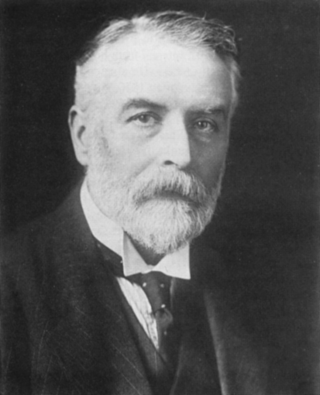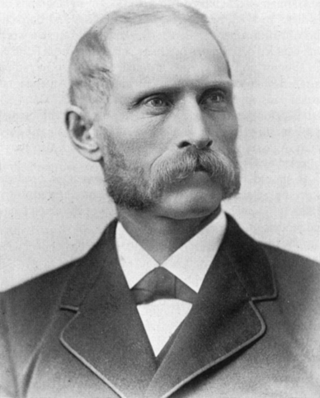Francis Buchanan, later known as Francis Hamilton but often referred to as Francis Buchanan-Hamilton, was a Scottish surgeon, surveyor and botanist who made significant contributions as a geographer and zoologist while living in India. He did not assume the name of Hamilton until three years after his retirement from India.

George Albert Boulenger was a Belgian-British zoologist who described and gave scientific names to over 2,000 new animal species, chiefly fish, reptiles, and amphibians. Boulenger was also an active botanist during the last 30 years of his life, especially in the study of roses.

Léon Louis Vaillant was a French zoologist. He is most famous for his work in the areas of herpetology, malacology, and ichthyology.

Samuel Walton Garman, or "Garmann" as he sometimes styled himself, was an American naturalist and zoologist. He became noted as an ichthyologist and herpetologist.
Henry Weed Fowler was an American zoologist born in Holmesburg, Pennsylvania.
Victor Gruschka Springer was an American biologist who was a Senior Scientist emeritus, Division of Fishes at the Smithsonian Institution's National Museum of Natural History in Washington, D.C. He was a specialist in the anatomy, classification, and distribution of fishes, with a special interest in tropical marine shorefishes. He published numerous scientific studies on these subjects; also, a popular book called "Sharks in Question, the Smithsonian Answer Book" 1989.
Antoine Alphonse Guichenot was a French zoologist who taught, researched, and participated in specimen collecting trips on behalf of the Muséum national d'histoire naturelle (Paris), including an extensive biological survey of Algeria.

The hooded carpetshark is a bamboo shark in the family Hemiscylliidae found around Papua New Guinea, between latitudes 5° S and 10° S, and longitude 144° E and 153° E. Its length is up to 75 cm. Like other longtailed carpetsharks, it can use its strong pectoral fins to walk on land for a short period of time. The hooded carpetshark is heavily wanted in the aquarium trade, the result is making this shark endangered.
Gilbert Percy Whitley was a British-born Australian ichthyologist and malacologist who was curator of fishes at the Australian Museum in Sydney for about 40 years.
George Sprague Myers was an American ichthyologist who spent most of his career at Stanford University. He served as the editor of Stanford Ichthyological Bulletin as well as president of the American Society of Ichthyologists and Herpetologists. Myers was also head of the Division of Fishes at the United States National Museum, and held a position as an ichthyologist for the United States Fish and Wildlife Service. He was also an advisor in fisheries and ichthyology to the Brazilian Government.
Maurice Kottelat is a Swiss ichthyologist specializing in Eurasian freshwater fishes.
Jacques Pellegrin was a French zoologist.
John Roxborough Norman was an English ichthyologist.
Peter Robert Last is an Australian ichthyologist, curator of the Australian National Fish Collection and a senior principal research scientist at CSIRO Marine and Atmospheric Research (CMAR) in Hobart, Tasmania. He is an elasmobranch expert and has described many new species of shark.
Gerald Robert "Gerry" Allen is an American-born Australian ichthyologist. His career began in 1963, when he spent a semester at the University of Hawaii, where he also received a PhD in marine zoology in 1971. In 1972, Allen wrote his doctoral thesis on the systematics and biology of the anemone fish.
Patricia J. Kailola is a noted ichthyologist. Her primary focus is in tropical Indo-Pacific fishes. She has worked in the Marine Studies program at the University of the South Pacific since 1995 and is an Australian Museum Research Associate. Among her numerous publications are listed several books covering tropical fish. She also has written texts on catfish. As of April 2006, she was working on a textbook on Western Indian Ocean fishes. She has assisted the Australian Museum in confirmation of species identification among their collection. Worldcat.org lists 27 works in 57 publications in 1 language and 603 library holdings.
Helen K. Larson is an ichthyologist who specialises in the fishes of the Indo-Pacific.
Phillip Clarence Heemstra was an American-South African ichthyologist. He was born in Melrose Park, Illinois, United States as the son of Clarence William Heemstra and his wife, Lydia. He attended school in Ottawa, Illinois, and completed a B.Sc. Zoology in 1963 at the University of Illinois at Urbana, Illinois, as well as his MSc degree (1968) and doctorate (1974) in marine biology at the University of Miami in Miami, Florida. He moved to live in South Africa in 1978.
Nikolai Vasilyevich Parin was a Soviet and Russian ichthyologist, specializing in oceanic pelagic fish. He headed the Laboratory of Oceanic Ichthyofauna at the RAS Institute of Oceanology in Moscow, where he ended his career as a Professor after more than fifty-seven years. In his career, he described more than 150 new taxa of fish and participated in 20 major oceanic expeditions. Thirty-six species of fish are named in his honour.
Pierre Brichard was a Belgian explorer and collector-exporter of African aquarium fishes, especially those of Lake Tanganyika.



